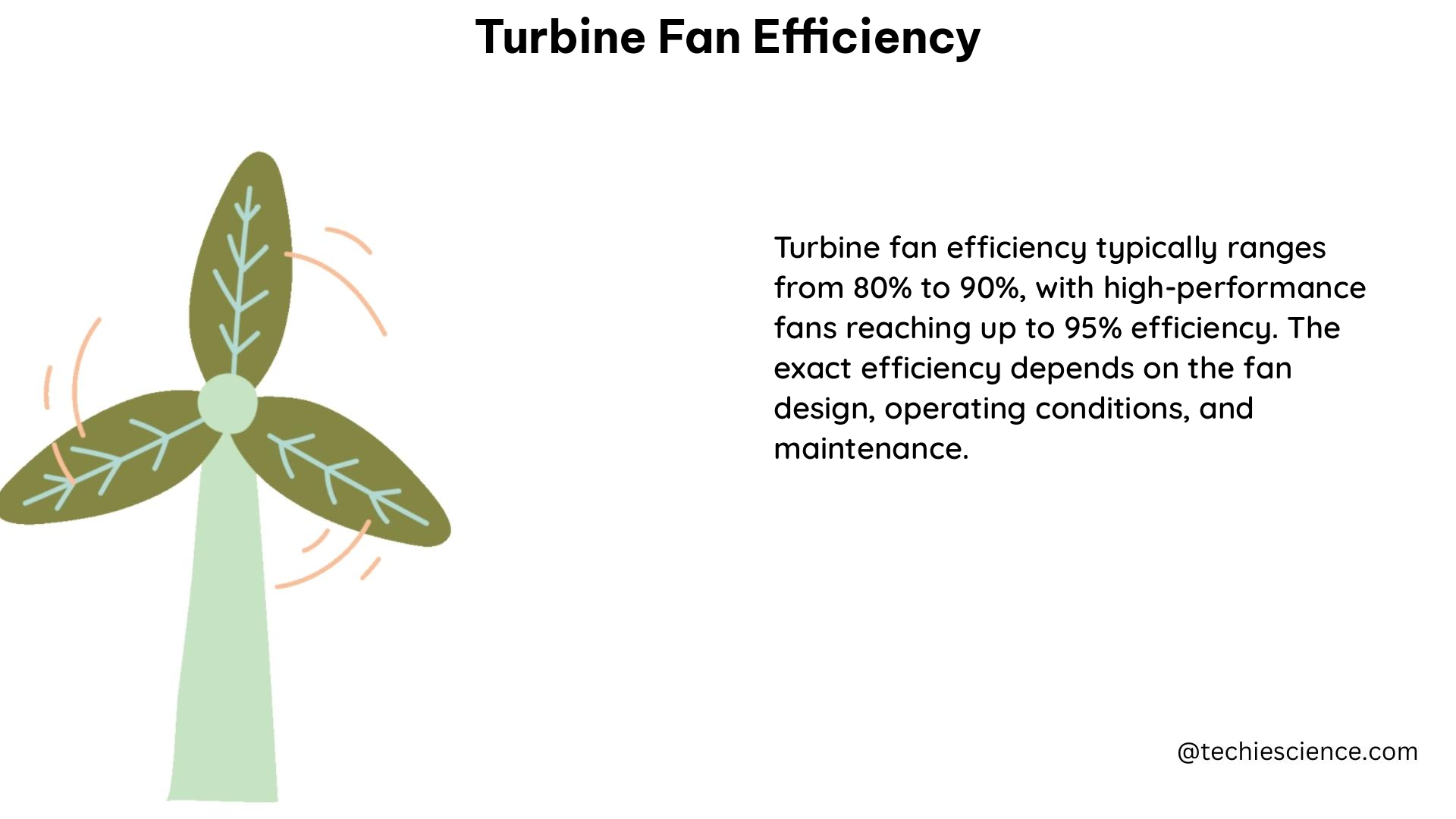Turbine fan efficiency is a critical factor in the performance of various types of turbines, including water, steam, gas, and wind turbines. Optimizing the energy conversion efficiency of these turbines is crucial for maximizing their output and reducing greenhouse gas emissions. This comprehensive guide delves into the technical details and measurable data points that are essential for ensuring the highest possible turbine fan efficiency.
Dimensional and Shape Measurements of Turbine Blades
In the case of gas turbines, which are used for generators and aircraft jet engines, the dimensional and shape measurements of turbine blades are essential for ensuring their energy conversion efficiency. Turbine blades have complex 3D shapes, and the key measurement points include:
- Diameter of Turbine Stages: The diameter of each turbine stage must be precisely measured to ensure optimal airflow and energy conversion.
- Blade Shape: The intricate 3D shape of the turbine blades must be accurately measured to maintain the desired aerodynamic profile.
- Assembly Accuracy: The assembly of the turbine blades must be measured to ensure that they are properly aligned and positioned within the turbine.
- Blade Thickness: The thickness of the turbine blades must be measured to optimize their structural integrity and aerodynamic performance.
- Shaft Alignment: The alignment of the turbine shaft must be measured to ensure that the blades are rotating smoothly and efficiently.
Dimensional Measurements for Thermal Power Generators

In the case of thermal power generators, the number of turbine blades can exceed 1,000, requiring strict dimensional measurement of each blade and the assembly accuracy of various related elements. These include:
- Blade Intervals: The spacing between the turbine blades must be measured to ensure optimal airflow and energy conversion.
- Root Conditions: The condition of the blade roots, where they are attached to the turbine shaft, must be measured to ensure proper support and stability.
- Lacing Wire Installation: The installation of the lacing wires, which help to stabilize the turbine blades, must be measured to ensure their proper placement and tension.
- Toe Shape: The shape of the turbine blade tips, or “toes,” must be measured to optimize their aerodynamic performance.
- Blade-Ring Clearance: The clearance between the turbine blades and the blade ring that stores them must be measured with extreme precision, as the tolerance can be as small as a few millimeters, even for turbine stages with diameters of several meters.
Real-Time Monitoring for Wind Turbines
In the case of wind turbines, real-time data on power output, rotor speed, and wind speed can be used to optimize the turbine’s performance and determine when maintenance is necessary. Some key data points and techniques include:
- Power Output Monitoring: Continuously monitoring the power output of the wind turbine can help identify any deviations from the designed power curve, indicating potential performance issues.
- Rotor Speed Tracking: Measuring the rotor speed of the wind turbine can provide insights into the efficiency of the turbine’s energy conversion.
- Wind Speed Data: Collecting real-time wind speed data can help correlate the turbine’s performance with the available wind resource, enabling better optimization.
- Statistical Analysis: Applying statistical methods to the collected data can help identify low-efficiency turbines, high-loss electric units, and units with degraded performance, allowing for targeted maintenance and improvement.
Augmenting Wind Turbine Performance with Concentrators
The performance of wind turbines can be further enhanced through the use of concentrators, as demonstrated in a study on an Archimedes Spiral Wind Turbine. The key findings from this study include:
- Power Coefficient Increase: The use of a concentrator resulted in a 10.7% increase in the power coefficient of the wind turbine.
- Annual Energy Production Increase: The concentrator-equipped wind turbine showed a 15.6% increase in annual energy production compared to a conventional wind turbine.
- Improved Aerodynamics: The spiral shape of the concentrator helped to optimize the airflow and energy conversion within the wind turbine.
By incorporating these technical details and measurable data points, turbine operators and engineers can ensure the highest possible turbine fan efficiency, leading to improved performance, reduced greenhouse gas emissions, and a more sustainable energy future.
References:
- Dimensional Measurement of Turbine Blades – KEYENCE.com
- Qualitative and quantitative assessments of an Archimedes Spiral Wind Turbine performance augmented by A concentrator
- Statistical Method of Low Efficiency Wind Turbine – IOPscience
- Measuring the performance of a wind turbine – Pico Technology
- Measurable power gains found in multi-rotor Vestas concept – Windpower Monthly

The lambdageeks.com Core SME Team is a group of experienced subject matter experts from diverse scientific and technical fields including Physics, Chemistry, Technology,Electronics & Electrical Engineering, Automotive, Mechanical Engineering. Our team collaborates to create high-quality, well-researched articles on a wide range of science and technology topics for the lambdageeks.com website.
All Our Senior SME are having more than 7 Years of experience in the respective fields . They are either Working Industry Professionals or assocaited With different Universities. Refer Our Authors Page to get to know About our Core SMEs.